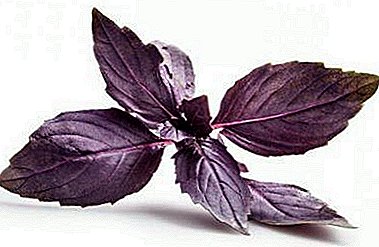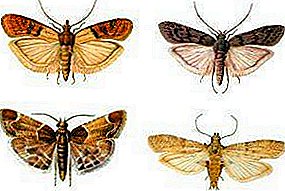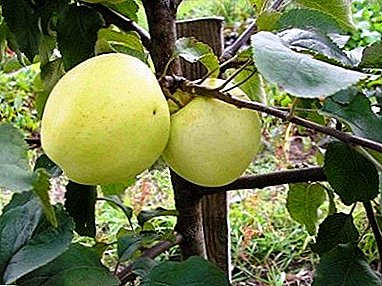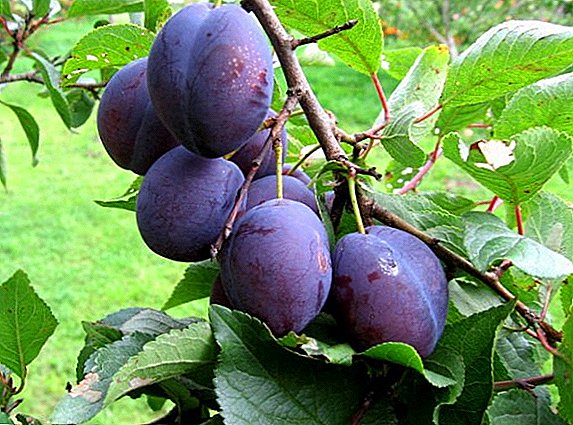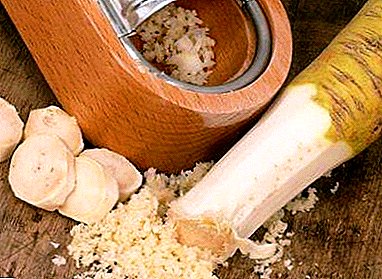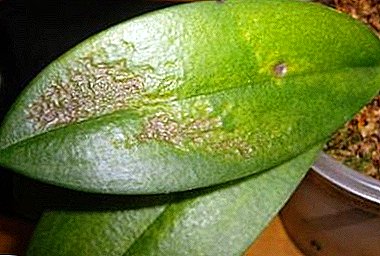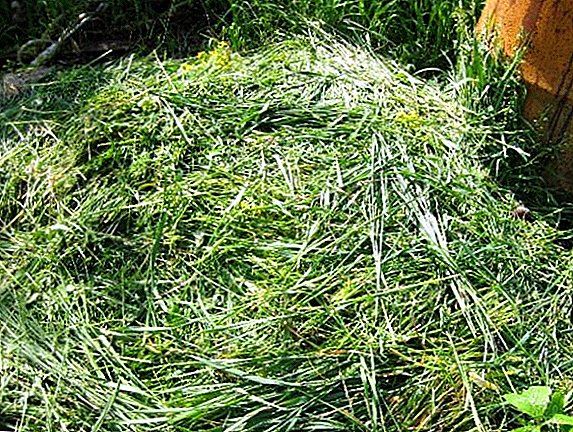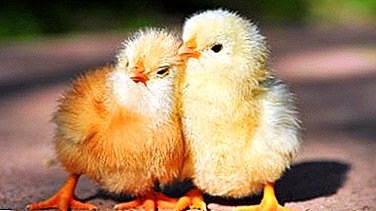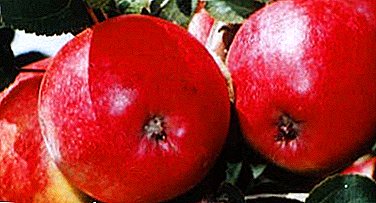
One of the most popular varieties of apples in the Urals - Belfleur Bashkir.
A detailed description of the variety, as well as tips on caring for apple trees can be found in the article.
Description of the variety and photo of the fruit in the article.
What kind is it?
 Early winter Bashkir Belfleur is a sweet food with a high taste.
Early winter Bashkir Belfleur is a sweet food with a high taste.
It was developed for the steppe and forest-steppe zones of the Urals, distributed in Tatarstan and Bashkortostan.
Among the winter varieties, such varieties demonstrate a good taste: Nymph, Orlovsky Sinap, Kandil Orlovsky, Aport and Orlik.
Pollination
This variety of fruit trees is self-fruitless, pollination occurs through the neighborhood of other apple trees.
Fertilizers can be: Antonovka, Bashkir handsome, Anis Sverdlovsk, Titovka seedling, Titovka and any other varieties that coincide in the flowering period.
Fragrant flowers are resistant to early morning spring frosts.
Description varieties Belfleur Bashkir
The Bashkir apple trees of Belfleur inherited from their parents slimness, strong planting of round fruits on the branches. A closer look at the distinguishing features of this fruit plant.
 Tree srednerosloy, classic rounded structure with branches at right angles, the ends of which are directed upwards.
Tree srednerosloy, classic rounded structure with branches at right angles, the ends of which are directed upwards.
Apple tree Belfleur Bashkir has thick and strong branches, tolerates winter frosts quite well.
Leaf plates are large.
The tree is suitable for the role of the mother plant when hybridizing, the root system easily perceives the transplant to a new place.
Bashkir Belfleur fruits have slightly elongated oval-round shape. The color is greenish, topped with pink-red stripes and speckles on one side. The size of apples is small, up to 150 g.
Apples have a medium stem length, deeply planted in the funnel of the fruit body. The seed nest is small with closed chambers, the seeds are medium.
Delicate pulp of apples has a light fine-grained structure, spicy sweet taste with a strong pleasant aroma.
A photo




Breeding history
The glorified ancestors of the new hybrid are Bashkir handsome and a hybrid from the gardens of the great breeder I. Michurin - Chinese Belfleur.
Varietal removal happened in 1938thanks Raisa Ippolitovna Bolotina.
She worked at Bashkir Research Institute of Agriculture and, together with her associates, brought out many wonderful varieties of apple, pear and currant trees.
Seriously, the Bashkir variety of Belfleur was engaged only in 1991 and now it is widely known, often found in collective gardens of the Soviet era.
Natural growth region
 Hybrid bred in Bashkiria medium resistant, wonderful endures summer drought.
Hybrid bred in Bashkiria medium resistant, wonderful endures summer drought.
The tree bears fruit excellently in all regions up to 50 degrees north latitude, i.e. suitable for planting in many regions of Russia.
For planting in this region, the following varieties are well suited: Uralets, Yantar, Ural Bulk, Silver Hoof and Isetskoe later.
Yield
Excellent yield (50-80 kg from a tree) and good stability and transportability fruits have become one of the conditions for the commercial distribution of this variety of apples.
Apples firmly enough held on the branches, carry strong winds without premature windfall. Fruit picking from September, excellent preservation until February.
The following apple varieties can guarantee high yields: Lobo, Antey, Lyubava, Kuybyshevskoe and Imrus.
Planting and care
Even experienced gardeners do not always know how to plant a fruit tree. We use the advice of the breeder I. V. Michurin, based on many years of experience of this great practical scientist.
 A few important landing rules:
A few important landing rules:
Digging the entire plot, scheduled for planting trees for at least 2 bayonet shovels in depth or plowing with a motor-block with a plow.
Plant desirable two year vaccinations.
Srednerosly apple trees on the plot sit on the four-meter distance in a row, with an interval of 6 meters between rows.
The landing pit, on the advice of I. Michurin, is needed 1 meter deep and wide, and on the bottom of the pit fall asleep land with humussuch a mound.
A peg, previously cleaned of bark, boughs and irregularities, is stuck through the middle of the hill into the solid bottom of the pit. The top of the earthen dump is placed a tree, so that root neck lifted two fingers above ground level, with the sediment of the soil the tree will fall.
Deep planting is not necessary, ideally, if the level of transplantation coincides with the level of planting in the nursery, it is possible and slightly higher.
The roots of the plant should be widely straightened in the planting hole and directed downwards. The ends of a root damaged by presale-digging are pre-cut with a sharp knife.
It is great if before planting (the night before) the roots of a tree dip in a solution of yellow clay half with fresh cow droppings or a good liquid organic fertilizer.
 After planting, the ground around the trunk is ground, then watering is required. (3-4 buckets of water). Watering in the first year after spring planting is done every week (in dry time).
After planting, the ground around the trunk is ground, then watering is required. (3-4 buckets of water). Watering in the first year after spring planting is done every week (in dry time).
In order to avoid sunburn, it is required to tie a tree with straw, leaving a crown (if there is one) or 4-6 upper buds.
Landing is possible as in the spring, before the appearance of the first leaves, so and fall, end of September, October (with sufficient wet soil, if it is dry - postpone until spring).
Leaving consists in loosening and weeding the soil every summer.
Two to three year old trees recommended to cut offleaving 4-6 buds on every new shoot.
Pruning should be carried out in early spring, before the movement of juices, can be gloss over with a simple oil paint (it should not contain oil, gasoline, kerosene, etc.).
Other garden work:
- in April, putting up and setting up trees damaged by hares and mice, preliminary pest control (aphid) - spraying with chemicals;
- in July, pruning dry and damaged branches, loosening the soil;
- grass weeding in August;
- September digging of trees;
- in November, trampling down snow at the roots of trees, for the prevention of rodents (hares and mice);
- in December, the destruction of caterpillar leaves hibernating on the bark in dry bundles of leaves.
Diseases and pests
 The Bashkir Belfleur is mainly damaged by:
The Bashkir Belfleur is mainly damaged by:
Codling moth (caterpillars damage fruits, contribute to a big fly). To get rid of the pinwort, double spraying with a solution of Parisian greens (strong poison) in the proportions of 100 g per 16 buckets of water immediately after flowering and in early June, when the ovary reached the size of hazelnut, is sprayed.
Apple aphid. It is destroyed with a solution of 200 g of crushed household soap on one bucket of warm water with the addition of one cup of thick broth of tobacco (shag), a quarter cup of kerosene, ground with a half cup of wood ash. It is advisable to dip infected branches into the pelvis with the mixture or treat them with a bast or a large brush.
Scab, a fungal disease, manifests itself as a grayish-greenish bloom on the shriveled bark of a tree. Removed by spraying diseased trunks with 2% Bordeaux liquid in early spring. Treatment should occur before the development of buds and the appearance of shoots.
It is also worth taking measures against the fruit sapstone, mining moths, haws and silkworms.
To grow a good harvest of apples is a gardener's dream. It becomes real if you plant good varieties of fruit trees. Bashkir Belfleur is one of these.
Its advantages are excellent taste (sweet), medium frost resistance, high yield, good transportability and quality.


